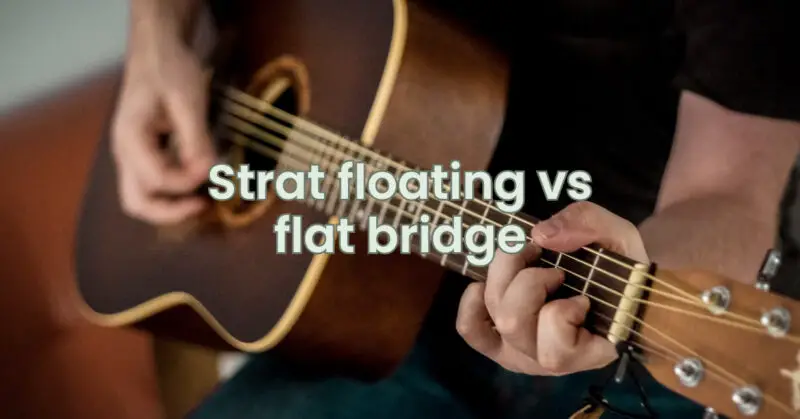The Stratocaster is one of the most popular electric guitars in the world, and its iconic tremolo bridge is a big part of its appeal. But how should the bridge be set up? Should it be floating, or should it be flat with the body of the guitar?
There are two main options for setting up a Stratocaster tremolo bridge: floating and flat.
Floating
A floating bridge is one that is free to move up and down. This allows you to use the tremolo arm to bend notes, do divebombs, and create other effects. However, a floating bridge can also be a bit finicky. If you push down too hard on the tremolo arm, it can cause the strings to go out of tune.
Flat
A flat bridge is one that is fixed in place. This means that you can’t use the tremolo arm to bend notes or do divebombs, but it also means that the strings are less likely to go out of tune.
So, which option is right for you?
The best option for you will depend on your playing style and preferences. If you like to use the tremolo arm for bending notes and doing divebombs, then a floating bridge is the way to go. However, if you’re not a big tremolo user, or if you find that a floating bridge goes out of tune too easily, then you might want to consider a flat bridge.
Here are some things to consider when choosing a bridge setup:
- Your playing style: If you’re a heavy tremolo user, then you’ll need a bridge that can handle the abuse. A floating bridge is the best option for this.
- Your preferences: Some people just prefer the look and feel of a floating bridge. If you’re one of those people, then go for it!
- Your budget: Floating bridges can be more expensive than flat bridges. If you’re on a budget, then you might want to consider a flat bridge.
Ultimately, the best way to decide which bridge setup is right for you is to experiment. Try out different setups and see what you like best. There’s no right or wrong answer, it all comes down to personal preference.
Here is a table of the pros and cons of floating and flat tremolos:
| Feature | Floating Tremolo | Flat Tremolo |
|---|---|---|
| Tuning stability | Less stable | More stable |
| Range of motion | More range | Less range |
| Effect on tone | Can change the tone slightly | Does not change the tone |
| Price | More expensive | Less expensive |
I hope this article helps you decide whether to get a floating or flat tremolo. Thanks for reading!
Additional considerations:
- String height: If you have a floating bridge, you’ll need to adjust the string height so that the strings are not too high or too low. If the strings are too high, it will be difficult to bend notes. If the strings are too low, they will be more likely to go out of tune.
- Intonation: You’ll also need to adjust the intonation of your guitar so that the notes are in tune all the way up and down the neck. This is especially important if you’re using a floating bridge.
- String breaks: If a string breaks on a floating bridge, it can cause the other strings to go out of tune. This is why it’s a good idea to have a spare set of strings on hand.
Conclusion:
The decision of whether to use a floating or flat bridge is a personal one. There are pros and cons to both setups, so it’s important to experiment and see what works best for you.


